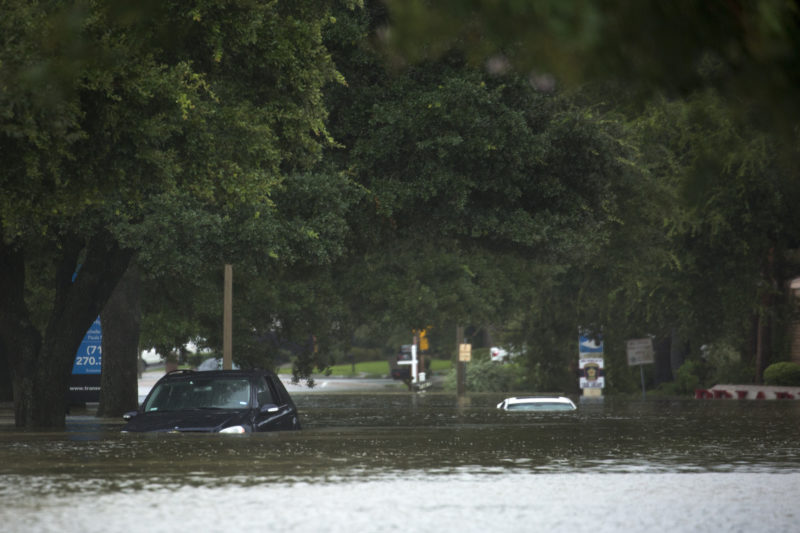Thousands of residents living near the Addicks and Barker reservoirs in northwest Houston are still in cleanup mode after their homes were inundated. It was only after the rain stopped falling that many of those homeowners discovered they were living in zones intended to be flooded in order to save downtown Houston from disaster.
Weren’t developers required to tell buyers this information? If officials knew these areas were flood pools, why would they permit construction on these sites in the first place?
Lise Olsen, the Deputy Investigations Editor at the Houston Chronicle, has discovered one of the people involved in construction of one of these neighborhoods is also Houston’s flood czar, Steve Costello.
“The ‘flood czar’ is sort of the nickname for the city’s resilience officer,” Olsen says. “It’s a position that was created by Mayor Sylvester Turner when he came into office because of some huge flooding that we’d had in Houston already before Harvey. And he picked a former city councilman named Steve Costello, who had run against Turner for the position of mayor and lost, but was considered sort of an expert in infrastructure because of his long history as an engineer in Houston. He had his own engineering firm, and he also had worked initially in his career for the U.S. Army Corps of Engineers.”
Given his bona fides, and the fact that he actually worked on one of these projects, you might think he would know that this was a dangerous place to be in during the course of these storms.
“Yes, you would. I certainly was surprised when he told me that he had never calculated what engineers call ‘the maximum flood pool’ for the Barker and Addicks reservoir. And he said he had no idea that the subdivision his firm had built was inside that area,” Olsen says. “And curiously, he didn’t remember that his own firm had also done a very comprehensive study of the potential dangers of the reservoir flood pools to homes and calculated, in fact, that more than 5,000 homes were inside the flood pools back in 2000. He said he didn’t remember that in the interview I had with him.”
But if he had an engineering firm involved with the development, did he have a duty to inform these homeowners?
“Indeed the engineer’s job is to study the hydrology and to make recommendations to the developers, and to draw up the plans that are submitted to the counties. And in fact, engineers for his company signed off on plans for those 1,500 homes in the Barker flood pool that had warnings on them in subdivision maps that were filed in county archives that said the area was subject to extended inundation. And those maps have been a really interesting part of what I’ve tried to look at,” Olsen says. “Who knew about those maps and who didn’t? And one thing that’s pretty clear is that there were a lot of people who signed them – engineers, city planning commission officials, county commissioners – but then they were filed away in these clerks offices in Fort Bend County and most homeowners never saw them. In fact, I explained to a lot of homeowners how to find them after Hurricane Harvey because they were floored to learn that their subdivisions were inside flood pools. And those warnings only appeared on the neighborhoods in Fort Bend County, not on the neighborhoods that have been approved in Harris County, which had even more flood pool neighborhoods.”
The investigation also brought up a developer, Mark Kilkenny, who built inside the Barker flood pools, who also turned out to be a longtime member of the city’s planning commission.
“That’s right. There’s a developer who is on the planning commission today,” Olsen says. “And there was another engineer who was on the planning commission throughout the 80s and into 2004 who was an engineer who worked on developments in the flood pool. These two men voted to approve many, many of these subdivisions all around the properties they developed. I think they did recuse themselves from their own projects, but they never mentioned this idea of the flood pool. They never brought it up.”
So what’s the lesson to be learned here? What’s to prevent that next development from being built if the planning commissions aren’t going to step in? Many of the flooded homes are back on the market right now.
“There are a lot of people who haven’t done anything about this,” Olsen says. “A lot of it’s ending up in federal court. These homeowners have lawyers who filed lawsuits against the government saying this was a taking of their land without notice and without compensation.”
You can find out more about Lise Olsen’s investigation here.
Written by Jen Rice.

















